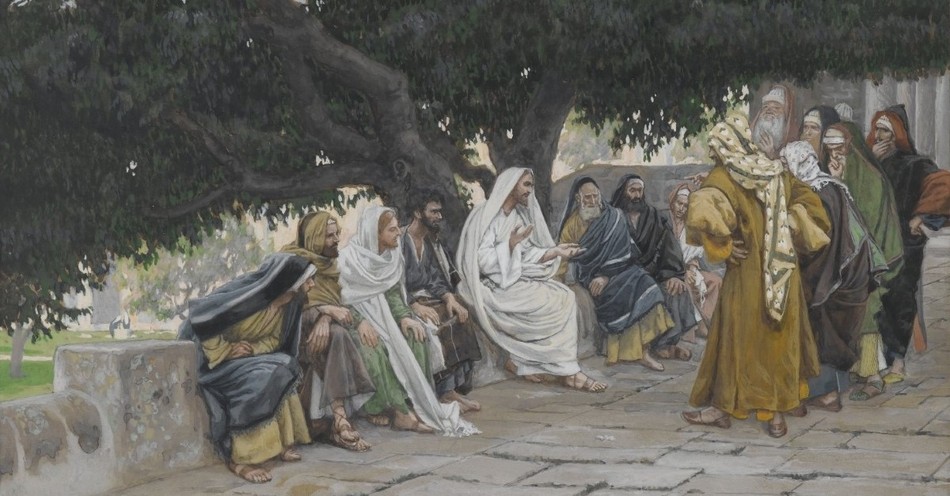Every religion has different camps that debate how to practice its beliefs. During the 70 years when the Jews were separated from their homeland, different ideological camps arose—most notably, the Pharisees and Sadducees. In Jesus’ time, these two sects were still around and became a major part of the story of Jesus’ ministry. Scripture provides over 99 references to the Pharisees and over 15 references to the Sadducees.
What made the Pharisees and Sadducees so prominent in Jesus’ story? How did their ideology affect their views of Jesus when he came on the scene?
What Made the Pharisees Different from the Sadducees?
Sadducees were the wealthy, powerful priests in Jesus’s time. While both Pharisees and Sadducees served in the Sanhedrin, Sadducees held to a different set of beliefs. They believed:
- That there was no afterlife and no angels (Matthew 22:23, Acts 23:8).
- They believed that teachers should emphasize the Torah as it was written without emphasizing later Old Testament books or oral traditions about the Torah.
- Believed in the power of humanity’s free will rather than God’s preordained will.
Since the Torah was only the first five books of the Bible, they didn’t consider the major or minor prophets or the wisdom books as nearly important.
Since the Sadducees were generally part of the upper class, they tended to go along with the Romans, avoiding anything that could create huge social conflicts. Hence, as Pamala Palmer notes, “the Sadducees are portrayed as opposed to Jesus and feared that he would overthrow them in power.”
The Pharisees were generally less wealthy and believed in many things that the Sadducees didn’t. Most notably, the Pharisees believed in:
- The existence of angels, the afterlife, and the supernatural realm.
- The written Torah and oral traditions about it, as well as later written books like the wisdom and prophetic books.
- That people had free will, but also that God had a foreknowledge of people’s destinies.
- The immortality of the human soul, although not in the resurrection of the body.
- The importance of making religious practices part of everyday Jewish life.
Bethany Verrett explains that the last belief led the Pharisees to develop “strict interpretations of the Law, even where rules were absent. They lived based on these strict rules about cleanliness, work on the Sabbath, what material to wear, and many other daily tasks.”
While they held to a stricter view of how to follow God than the Sadducees, that didn’t necessarily make them more moral. Jesus called them hypocrites six times (Matthew 23:13, 15, 23, 25, 27, and 29).
While the Pharisees and Sadducees had their differences, the one thing they could agree on was that Jesus of Nazareth was a threat. Unified under the belief that Jesus’ teaching would undermine their power among the Jewish people, they sought to put him on trial and kill him.
Were Pharisees and Sadducees the Only Important Religious Groups?
The Pharisees and Sadducees were not ancient Judea’s only religious groups.
Another Jewish sect that grew out of the conflicts during the Maccabean age was the Essenes. The gospels do not mention them, possibly because they weren’t part of the crowds following Jesus. Michael A. Hall notes in his book The Promise and the Blessing that the Essenes lived in secluded communities in the desert. However, ancient writers like Philo of Alexandria, Josephus, and Pliny the Elder mention them.
The Essenes were a separatist group. They had many of the same beliefs as the Pharisees but viewed the priesthood, temple rituals, and sacrificial systems in place as corrupt. While the Pharisees and Sadducees sought to do God’s work within society, the Essenes avoided society. That separation, living in the desert and doing their work, had some surprising effects centuries later: they left hidden records and survived catastrophes like the sack of Jerusalem. Dr. John Barnett states, “The precise nature of the Essenes is still not certain, though it is generally agreed that the Qumran community that produced the Dead Sea Scrolls was an Essene group.”
The Zealots were another group that existed during Jesus’ time. While the Pharisees, Essenes, and Sadducees originated shortly after the Babylonian exile, the Zealots were founded much later—around AD 6 by a man named Judas (not Iscariot). This Judas was a Galilean who revolted against Rome in response to a census tax. The original group led by Judas was quickly overtaken by the Romans and crucified. Following their leader’s crucifixion, people who sympathized with the Zealot agenda became an underground society that used covert attacks to overthrow the Roman occupation. Josephus stated that the Zealots had “an insatiable passion for liberty.” (Antiquities 18.1.6). They believed that Israel should have no master other than God.
The Zealots are mentioned several times in the New Testament. One of Jesus’ disciples, Simon the Zealot, had been involved in the group (Matthew 10:4, Mark 3:18, Luke 6:15, Acts 1:13). It appears that Barabbas, the insurgent in prison for taking part in a revolt, was a Zealot (Mathew 27:11-26, Mark 15:6-15. Luke 23:13-25, John 18:38-40). Ultimately, the Zealots’ revolt had short-term success: they retook the city of Jerusalem in AD 66. However, the emperor Titus took brutal action: Jerusalem, including its temple, was destroyed in 70 AD.
While the Pharisees and Sadducees weren’t the only religious groups in Jesus’ day, they were the most successful since they were the most moderate (no exiles, no paramilitary agendas). So, as the most notable Jewish leaders at the time, how did they get along with Jesus?
Did Any Pharisees or Sadducees Like Jesus?
While we don’t get many details about the Sadducees interacting with Jesus, we can see that at least some Pharisees are cordial to Jesus. For example, Luke 7:36-50 mentions one Pharisee inviting him to dinner. One notable Pharisee who seeks out Jesus for advice is Nicodemus in John 3:1-21. Nicodemus may have called on Jesus at night to keep his visit private to avoid causing conflict with other Pharisees. The fact that Nicodemus uses the term “rabbi” suggests he had respect for Jesus (John 3:2). Later in the book of John, we see Nicodemus’ name come up again after the crucifixion of Jesus. In John 19:39, Nicodemus is mentioned along with Joseph of Arimathea, preparing Jesus’ body for burial before placing him in the tomb.
Who was Joseph of Arimathea? Scripture says that Joseph of Arimathea was a rich member of the Sanhedrin (Mark 15:43) who had not voted to condemn Jesus. It’s unclear whether Joseph was a Pharisee or a Sadducee, but the fact that he was wealthy suggests he could have been a Sadducee. Joseph is known for requesting the body of Jesus from Pilate (John 19:38) and burying Jesus in the tomb Joseph had prepared for himself. Dr. Thomas L Constable notes, “Joseph's courageous act doubtless alienated him from many of his fellow Sanhedrin members.”
Why Did the Pharisees and Sadducees Hate Jesus?
Many verses mention that Jesus could be controversial. We are told that “the Jews persecuted him” (John 5:16) and “tried all the harder to kill him” (John 5:18). We don’t know if these Jews were Pharisees or Sadducees.
We see many occasions where the leaders (sometimes defined as Pharisees or Sadducees, sometimes it’s not defined) clashed with Jesus. For example, in Luke 20, we are told that the scribes and chief priests sought to arrest Jesus.
Since we see far more references to the Pharisees clashing with Jesus than the Sadducees, we may assume they hated him more. However, no definitive verse tells us which group hated him for sure. We can ask why Jesus’ teachings and ministry threatened both the Pharisees and Sadducees.
First, they hated Jesus out of jealousy. Pharisees and Sadducees were teachers of the law. They spent much time teaching and rebuking people but rarely drew huge crowds like Jesus. Jesus often taught thousands. Many of the formal religious leaders did not receive Jesus’ popularity among the people. Not surprisingly, then, they often tried to put him down or discredit them—the many times when they are recorded as “testing” Jesus.
Second, they hated Jesus because his conversations with them often exposed their flaws. They sat in the highest places of honor in the Jewish community. Jesus challenged and rebuked their behavior many times. In Matthew 23, Jesus even calls the teachers of the law and Pharisees ‘snakes’ (Matthew 23:33), whitewashed tombs (Matthew 23:27), blind (Matthew 23:16), and hypocrites. Particularly for the Pharisees, who emphasized following rules and saw themselves as the experts on getting everything right, being called hypocrites was galling.
Third, they disliked Jesus because they feared that what Jesus was teaching would lead to an uprising. While the Sadducees especially cared about keeping the Romans happy, they maintained their social positions, and both groups held power through (spoken and unspoken) agreements with the Roman government. If these crowds of Jesus' followers staged a revolt, they could be held responsible and suffer imperial wrath.
This jealousy, pride, and fear led the Pharisees and Sadducees to agree on one thing: to get rid of Jesus. They arrested Jesus, unjustly tried him, and called for his crucifixion in front of Pontious Pilate . . . all to save their position. However, in the end, their actions led to the fulfillment of the Law they loved. Jesus’ death and resurrection brought forth a new covenant, the Messiah offering salvation and freedom that ran deeper than anything they expected.
Photo Credit: Public domain (nineteenth-century painting by James Tissot) via Wikimedia Commons

You can find out more about Valerie, her books, and her blog at www.valeriefentress.com.
This article is part of our Christian Terms catalog, exploring words and phrases of Christian theology and history. Here are some of our most popular articles covering Christian terms to help your journey of knowledge and faith:
The Full Armor of God
The Meaning of "Selah"
What Is Grace? Bible Definition and Christian Quotes
What is Discernment? Bible Meaning and Importance
What Is Prophecy? Bible Meaning and Examples



.jpg)